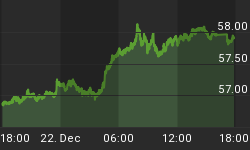On November 15, the Census Bureau released its monthly report on Manufacturing and Trade Inventories and Sales. Despite the fact that is it mid-November, we are just now getting data for September.
The census bureau headline reads "total business inventories/sales ratio based on seasonally adjusted data at the end of September was 1.38." That's a decline of 0.1 percentage points.
I went back through a number of charts to highlight major flaws inherent in superficial reporting on headline numbers.
Bloomberg Econoday saw things this way:
"Inventories proved tame in September, rising only 0.1 percent against a sharp 0.7 percent gain in sales that pulls the inventory-to-sales ratio one notch leaner to 1.38 from 1.39. High levels of inventories were a concern going into the fourth quarter but this morning's very strong retail sales report may in fact point to the need to build inventories further."
The Census Bureau posted this chart.

The above chart certainly does not reflect any need to build inventories. Here are some charts I produced from Fred, the St; Louis Fed data repository.
Total Business Inventory-to-Sales

Manufacturers Inventory-to-Sales

Retailers Inventory-to-Sales

Auto Inventory-to-Sales

Merchant Wholesalers Inventory-to-Sales

Apparel Inventory-to-Shipments

Fred did not have inventory-to-sales for apparel so I substituted shipments.
What is Normal?
In my first chart I asked "Is this is normal?" three times.
However, "normal" is not a constant, and it varies sector by sector.
Take autos for example. The distribution mechanism and the way autos are purchased has not changed in decades.
- Manufacturers ship autos to dealers.
- People buy autos from dealers.
- Dealers hold acres of cars.
The auto inventory-to-sales ratio is the least volatile in the group simply because the auto business has not changed. The number of auto dealers has not skyrocketed like the number of Wal-Mart stores. The number of US auto manufacturers changes very little over very lengthy periods of time.
Tesla style direct sales may change things in the future, but for now Tesla is a minor player.
Manufacturers vs. Retailers
- Manufacturer inventory-to-sales ratio bottomed in December of 2005 at 1.14.
- Retailers inventory-to-sales ratio bottomed over six years later in March of 2012 at 1.34.
- Total inventory-to-sales ratio bottomed in March of 2011 at 1.24.
What's Going On?
Manufacturing inventory-to sales is a reflection of just-in-time production and delivery coupled with a more stable influence of autos.
Retailer inventory-to-sales is a reflection on a huge move towards online shopping and a massive buildup of new retail stores despite the clear shift towards online shopping.
Since auto sales are the biggest component of retail sales, the total inventory-to-sales ratio looks very peculiar.
Here is the answer to the "Is this normal?" question in my first chart:
One simply cannot analyze inventories in an aggregate fashion this way. A single chart does not provide enough information.
Ominous Charts
Individually, we can analyze the charts. They mostly look ominous.
- Despite record auto sales that realistically have little room to go anywhere but down, the auto inventory-to-sales ratio is at the top end of the range.
- Retailers have over-expanded in an economy that has clearly shifted away from big box stores to online delivery.
- The manufacturers chart is skewed because manufacturing includes autos.
- Merchant wholesalers looks downright scary.
Manufacturers are not going back to 1995 levels of inventory-to-sales except via a recessionary spike. The same applies autos.
Trends in online shopping suggest retailers have much inventory shrinkage to do. I expect more retail store closings and fewer new stores in the coming years. Retail stores add inventory and huge numbers of jobs. Where will job growth come from?
2016 Inventory Crisis
Talk of the need to build inventories is simply ridiculous. I discussed this previously in Inventory Crisis: Can Parrots Read Charts?

SupplyChain247 commented "These days, flexibility is best guaranteed through supply chain network technology. Nordstrom recently acquired a minority stake in DS Co., a cloud-based supply chain software firm. The motivation behind the purchase was to make direct shipments from vendors to customers much easier. Direct shipments are a clever way of reducing inventory burdens."
Factor in the strong likelihood of global trade wars and the above inventory charts look worse than simply ominous.
For reflections on trade war possibilities, please see Expect Global Trade Collapse; Bills That Won't Be Paid; Deflation Coming Up?
For department store carnage, please see Retail Department Store Carnage: Amazon to Blame? Mish 12-Point Summation.















